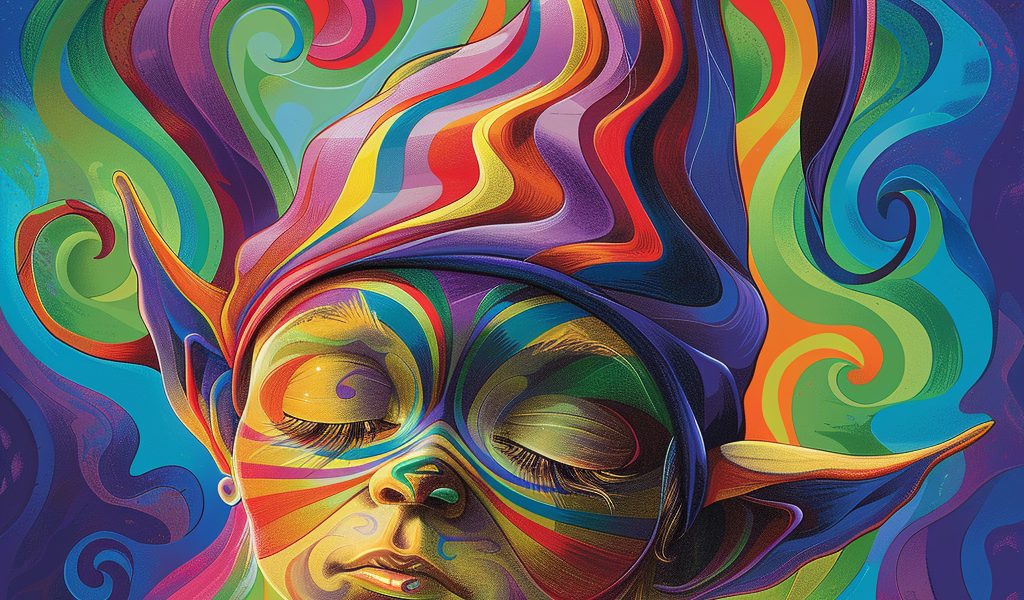
in this article
- Introduction
- The Essence of the Trickster
- Trickster Chemicals
- Final Thoughts
Are you 18 or older?
Please confirm that your are 18 years of age or older.
You are not allowed to access the page.

Disclaimer: The views and opinions expressed in this article are those of the authors and do not necessarily reflect the official policy or position of the Chemical Collective or any associated parties.
There are many ways to define and conceptualise psychedelics. For example, these chemicals may be referred to as plant medicines or entheogens, based on their ability to generate healing or spiritual experiences, respectively. The Aztecs called Psilocybe mexicana (a species of psychedelic mushroom) teonanácatl, which in the Aztec Nahuatl language means ‘divine mushroom’ or ‘flesh of the gods’.
While the alternative terms for psychedelics have utility, they often only capture an aspect of the psychedelic experience (after all, psychedelics don’t always heal but can harm too, and they don’t always evoke a sense of the holy or divine). This is why many psychonauts don’t find terms like plant medicine or entheogen appealing or personally relevant. The term psychedelic, which means ‘mind-manifesting’, is a more general term that can cover the many facets and possibilities of a psychedelic experience.
However, in keeping with the usefulness of having other terms in the psychedelic lexicon, I would like to propose an additional one: trickster chemicals.
I believe that many of the effects of psychedelics find resonance with the trickster archetype (a general pattern in the human psyche, which perennially expresses itself in human myths, stories, books, films, and behaviours). I would like to detail where I think these similarities lie. But first, a description of the trickster archetype is necessary.
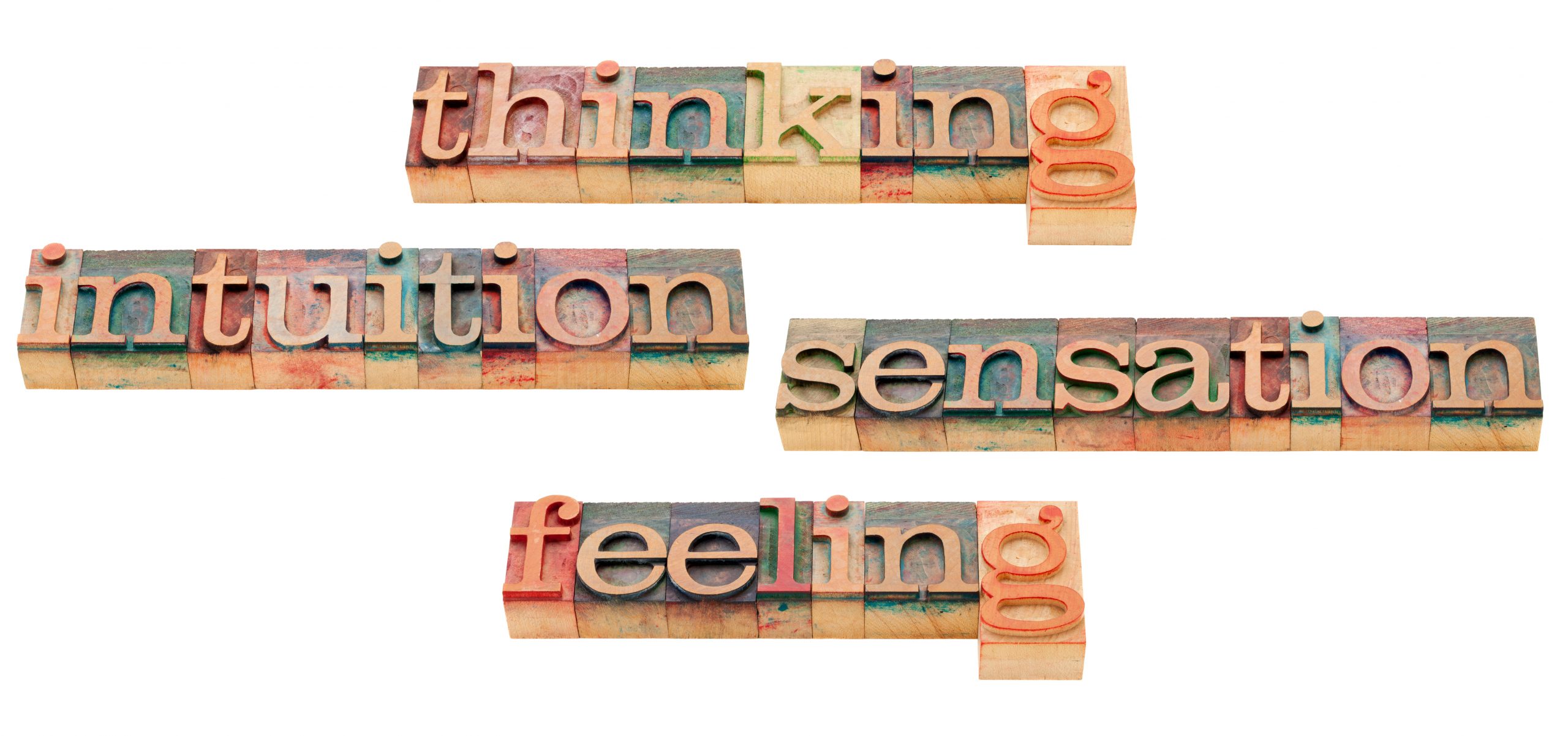
The Swiss psychologist Carl Jung offered a description of the trickster archetype – an ancient, innate pattern that exists in the human unconscious – in his essay ‘On the Psychology of the Trickster Figure’. Many of his descriptions have since become seen as essential to the nature of a trickster character. This character is portrayed in myriad ways in cultures all over the world, but there are often certain characteristics that underlie them. For instance, Jung states, “Ability to change his shape seems…to be one of his characteristics”, including taking the form of an animal. Indeed, many tricksters in indigenous myths and religious traditions are shapeshifters and adopt animal forms like that of a rabbit, raven, fox, snake, or coyote.
Trickster figures can shift back and forth between human and animal forms. But they can also be therianthropic, meaning that they have qualities of both a human and animal. For example, Shahmaran is a trickster figure in ancient Persian folklore whose top half was that of a woman and bottom half was that of a snake. However, even when trickster figures appear only physically in animal form, they can still have human characteristics like intelligence, wisdom, and the ability to communicate, as well as supernatural or magical abilities that evince their divine status. As a case in point, Jung points out the features of the ancient Roman god Mercurius (or Mercury):
A curious combination of typical trickster motifs can be found in the alchemical figure of Mercurius; for instance his fondness for sly jokes and malicious pranks, his powers as a shape-shifter, his dual nature, half animal, half divine, his exposure to all kinds of tortures, and—last but not least—his approximation to the figure of a saviour.
Tricksters are pranksterish and paradoxical (e.g. both foolish and wise, bestial and divine, animal and human, subhuman and superhuman, troublemaker and saviour, malicious and benevolent, and so on and so forth). Jung also refers to “strange ecclesiastical customs based on memories of the ancient saturnalia” enacted in the early Middle Ages (Saturnalia is an ancient Roman pagan festival honouring the agricultural god Saturn). One example was the Feast of Fools, where roles and hierarchies were inverted: lower-status people would pretend to be popes and kings.
These celebrations – these breaks in the rigidity and strictures of ordinary, religious life – involved rejoicing, drinking, singing, dancing, jesting, smutty jokes, play-acting, dressing up, cross-dressing, and generally wild and unhinged behaviour. Jung writes that “the older level of consciousness could let itself rip on this happy occasion with all the wildness, wantonness, and irresponsibility of paganism. These ceremonies, which still reveal the spirit of the trickster in his original form, seem to have died out by the beginning of the sixteenth century.” He continues:
In picaresque tales, in carnivals and revels, in sacred and magical rites, in man’s religious fears and exaltations, this phantom of the trickster haunts the mythology of all ages, sometimes in quite unmistakable form, sometimes in strangely modulated guise. He is obviously a ‘psychologem’, an archetypal psychic structure of extreme antiquity. In his clearest manifestation he is a faithful copy of an absolutely undifferentiated human consciousness, corresponding to a psyche that has hardly left the animal level.
Jung believes that the trickster represents a “rudimentary stage of consciousness”. The trickster is an impulsive figure, characterised by present-minded joy and the wish to play, joke, and make others laugh. Yet the unrestrained energy and behaviour of the trickster can also cause discomfort and chagrin in others. Tricksters don’t always adopt the role of delight-maker. As mischief-makers, they can also disrupt social and cultural order, as well as upset others through their pranks and jokes.
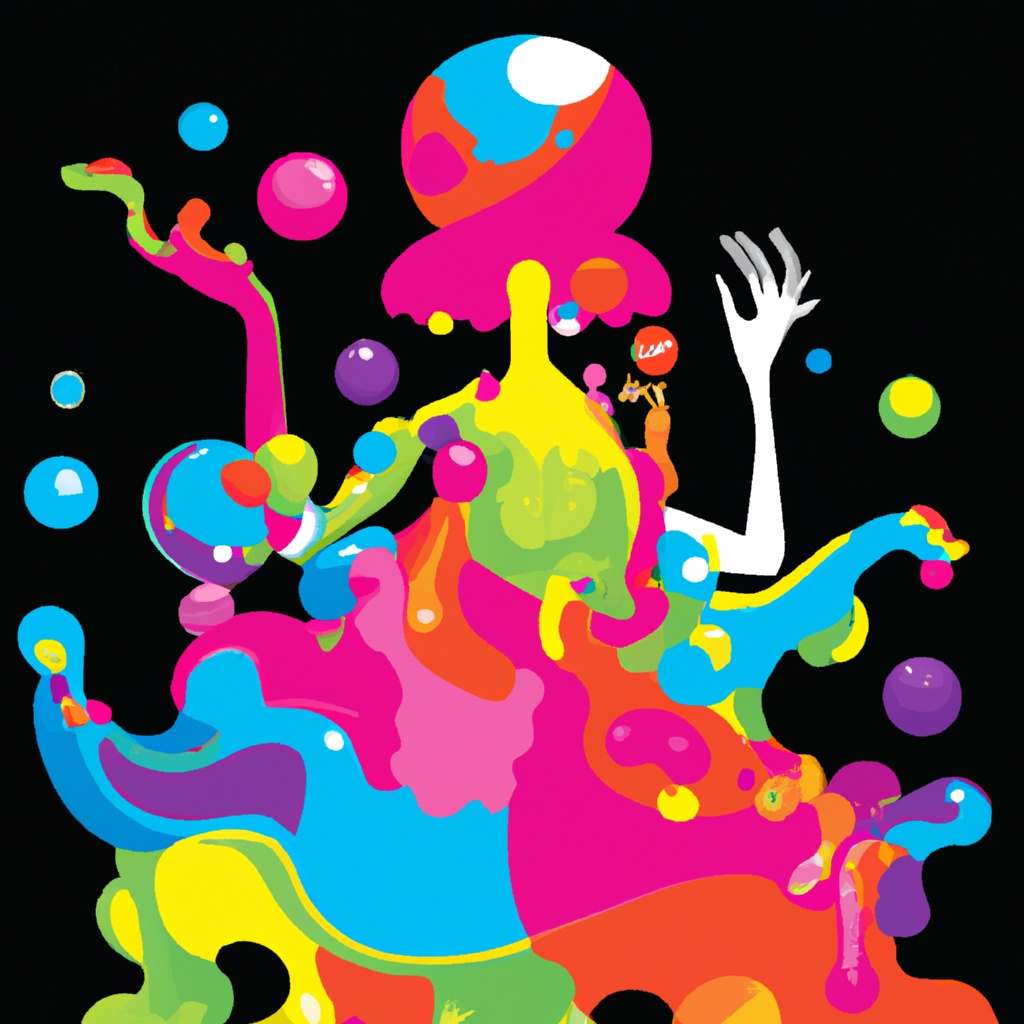
Ultimately, however, the ‘boundary-crossing’ quality of tricksters has an important role to play: it can challenge customary norms and morality, expose the weaknesses and immoralities of others, and show us what other modes of being are possible. Jung also argues that the essence of the trickster manifests outside the realm of myth, and he links this figure to the concept of the shadow (the unconscious aspect of ourselves that contains qualities and feelings we disapprove of and thus repress):
The trickster motif does not crop up only in its original form but appears just as naïvely and authentically in the unsuspecting modern man—whenever, in fact, he feels himself at the mercy of annoying ‘accidents’ which thwart his will and his actions with apparently malicious intent. He then speaks of ‘hoodoos’ and ‘ginxes’ or of the ‘mischieviousness of the object’. Here the trickster is represented by countertendencies in the unconscious, and in certain cases by a sort of second personality, of a puerile and inferior character, not unlike the personalities who announce themselves at spiritualistic séances and cause all those ineffably childish phenomena so typical of poltergeists. I have, I think, found a suitable designation for this character component when I called it the shadow. On the civilized level it is treated as a personal ‘gaffe’, ‘slip’, ‘faux pas’, etc., which are then chalked up as defects of the conscious personality. We are no longer aware that in carnival customs and the like there are remnants of a collective shadow figure which prove that the personal shadow is in part descended from a numinous collective figure. This collective figure gradually breaks up under the impact of civilization, leaving traces in folklore which are difficult to recognize. But the main part of him gets personalized and is made an object of personal responsibility.
The trickster, then, also shows up when we complain about fate playing tricks on us. The human experience is ripe for comedy, and our ineptitude, blunders, slip-ups, and run-ins with fate can be likened to reality (as a trickster) pranking us. When reality and our lives appear as a joke, we are tapping into the trickster archetype: the sense that we live in a world governed by disorder, leaving us with our faces in the mud. Tricksters turn reality into comedies, which can be fit for merriment and laughter – but only if we are willing to take life and ourselves less seriously.
Jung emphasises that the trickster’s nature is primitive; in fact, he notes that his “chief and most alarming characteristic is his unconsciousness”. While the trickster is a divine being with cunning and superhuman abilities, Jung contends “he is in many respects stupider than the animals, and gets into one ridiculous scrape after another.” He adds, “Although he is not really evil he does the most atrocious things from sheer unconsciousness”. This is why tricksters are often considered to be fools. But they are divine and helpful fools. They may behave irrationally, unconsciously, and clumsily, but these figures often feature in myth as creator gods (e.g. Hueveane in Pedi and Venda mythologies) and as wise teachers (e.g. Coyote and Raven in Native American mythologies). Jung writes:
The [mythological] figure works, because secretly it participates in the observer’s psyche and appears as its reflection, though it is not recognized as such. It is split off from his consciousness and consequently behaves like an autonomous personality. The trickster is a collective shadow figure, an epitome of all the inferior traits of character in individuals.
But through confrontations with the trickster figure, which can amount to confrontations with the shadow aspect of ourselves, we can learn a great deal. By understanding the calamities and mishaps wrought by the trickster figure, we can integrate our more shadowy aspects, thereby making the unconscious conscious (this a process that Jung calls individuation, which leads to wholeness or balance of mind). This bringing together of our different parts is a form of healing. The trickster, then, is not only a bringer of trouble but a bringer of light.
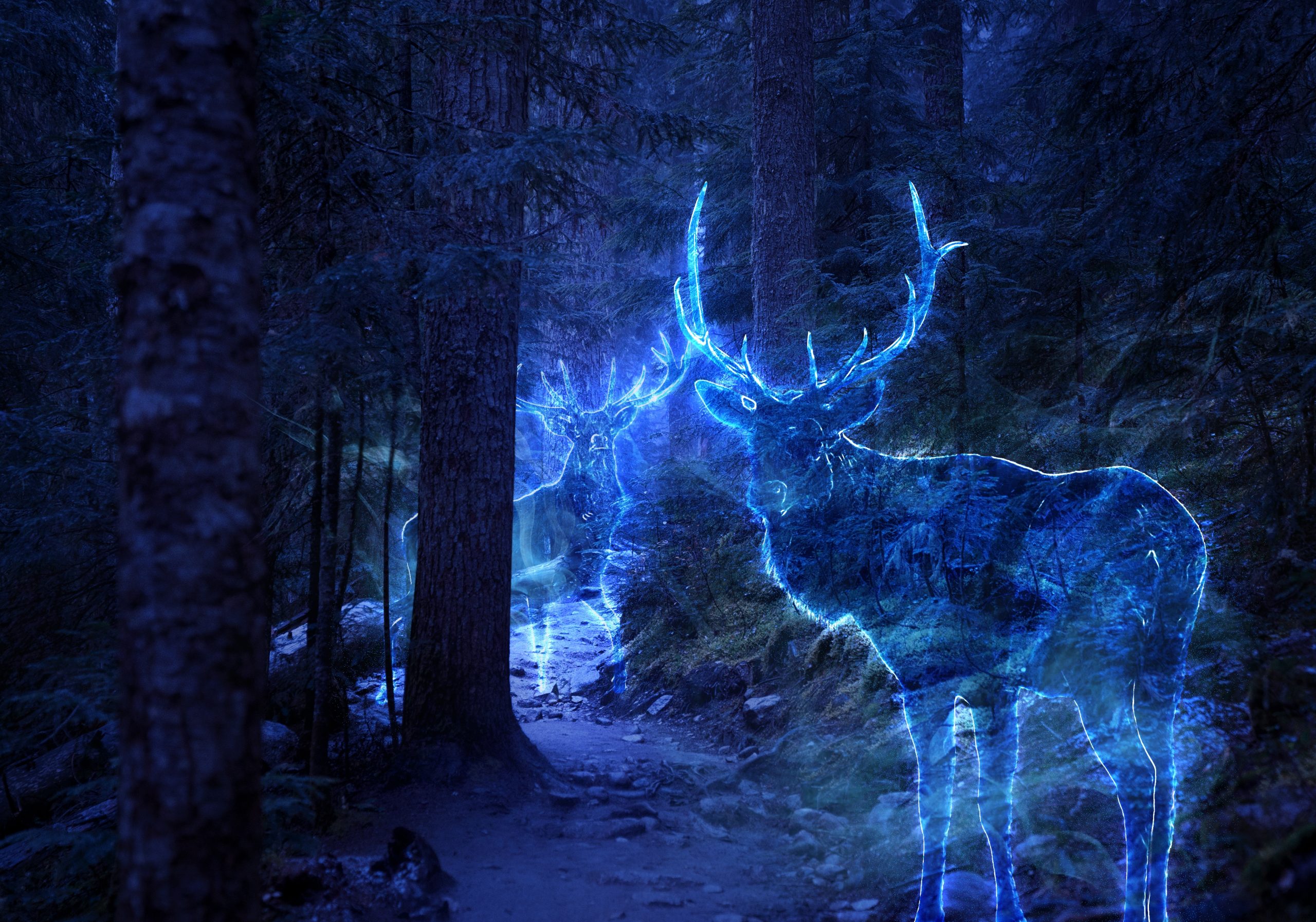
Now I would like to connect the various aspects of the trickster archetype to the effects of psychedelics. Let’s start with shapeshifting. It is not uncommon for psychonauts to find themselves shapeshifting while under the influence of psychedelics. Transforming into non-human animals is especially common, something that many shamans and psychedelic users report after drinking ayahuasca.
Psychedelics have a curious ability to induce therianthropic states (where someone experiences themselves as a human-animal hybrid). In an altered state of consciousness, someone may experience themselves as feline- or serpent-like, as both human in some respects but also animalistic in other respects. This therianthropic state can be visionary and somatic, in the sense of taking on the bodily and behavioural qualities of a non-human animal. One may also have the sense of embodying the psychological or emotional qualities of that animal (perhaps reflecting and symbolising emotions in the shadow, such as lust and aggression).
Just like quintessential trickster figures, psychedelics can induce experiences of shapeshifting: this is the trickster archetype made manifest, on a visceral level. Furthermore, these compounds – alongside the shapeshifting – can evoke feelings of superhuman or supernatural abilities, which may include experiences of telepathy, clairvoyance, omniscience, time travel, and god-like creative powers. One may have a sense of becoming divine (or realising one’s divinity). However, as in the case of trickster figures like Mercurius, one may feel both human and divine.
Another common aspect of the psychedelic experience, similar to that of a trickster, is paradoxicality: seemingly absurd or contradictory states. The philosopher Walter Stace maintained that paradoxicality is an essential feature of mystical experiences, which can be easily and reliably occasioned by psychedelics. The unitive mystical experience – oneness, or the sense of becoming unified with something greater than oneself (e.g. the universe or divine consciousness) – often results in paradoxical feelings. In this unitive state, someone may feel that they are both ‘everything and nothing’ or that they are both ‘nowhere and everywhere’. This feeling of paradoxicality may accompany other psychedelic states, such as the sense of being both human and divine.
If festive celebrations in medieval times like the Feast of Fools can be seen as reflections of the trickster archetype, then so too can the wild and unrestrained mentality induced by psychedelics. These compounds can help us shake off mental shackles and attachment to cultural norms and expectations. They can lead to a festive, celebratory, joyous, and carefree attitude that is Dionysian in nature. This is a state of present-minded intoxication, madness, and ecstasy. Much like the attitude of participants in Dionysian, Saturnalia, or medieval festivities, the psychedelic mindset can lead to dancing, joking, playfulness, dressing up, sexual activity, increased connectedness to others, and freedom from social constraints. It’s no wonder, then, that psychedelic festivals involve this kind of activity. The festive atmosphere, heightened by psychedelics, leads to displays of very tricksterish behaviour.
I am not sure if I would want to use the term ‘primitive’ to describe the trickster state of mind that psychedelics can induce. While this mindset may feel primal, animalistic, and instinctive, characterised by an overflowing of unconscious urges, I would not want to call this mentality ‘stupider’ than that of an animal, as Jung does. ‘Primitive’, ‘unconsciousness’, ‘rudimentary’, ‘animal level’, and ‘subhuman’ all carry some negative connotations. The psychedelic mindset can feel wild and primal, but this doesn’t mean it should be interpreted as dangerous or something purely animalistic.
Instead, I would argue that the trickster mentality is distinctly human. In fact, it can put us in touch with what is most basically human, rather than what is most basically non-human. This is the tendency towards celebration, festivity, intoxication, mischief, and humour. It may be argued, contrary to this, that some non-human animals engage in similar behaviours, such as play, humour, laughter, and self-intoxication. However, these behaviours are not quite of the kind and degree seen in humans. After all, it is only humans who can express the trickster in stories and rituals, which represents how important this archetype is in our lives.
As stated previously, trickster figures are disruptors and boundary-crossers. They break physical, societal, and cultural rules. This occurs in myths all over the world, in subversive celebrations, and during rituals (a role carried out by clowns, buffoons, and jesters in various cultures). Psychedelics are likewise disruptors and boundary-crossers, in several ways.
Firstly, on the neurobiological level, they generate chaotic and unpredictable activity in the brain. Robin Carhart-Harris and other psychedelic researchers have proposed an ‘entropic brain hypothesis’, which states that the entropy (or disorder) increases in the brain following psychedelic use and this is tied to the richness of psychedelic states and attendant therapeutic benefits. The hypothesis advances the more general idea that the quality of conscious states depends on the brain’s level of entropy (e.g. depression is linked to a low entropy – or highly ordered – brain state, whereas psychosis is associated with a high entropy – or highly disordered – brain state). Carhart-Harris and other researchers supported this hypothesis with brain imaging data when it was originally proposed in 2014.
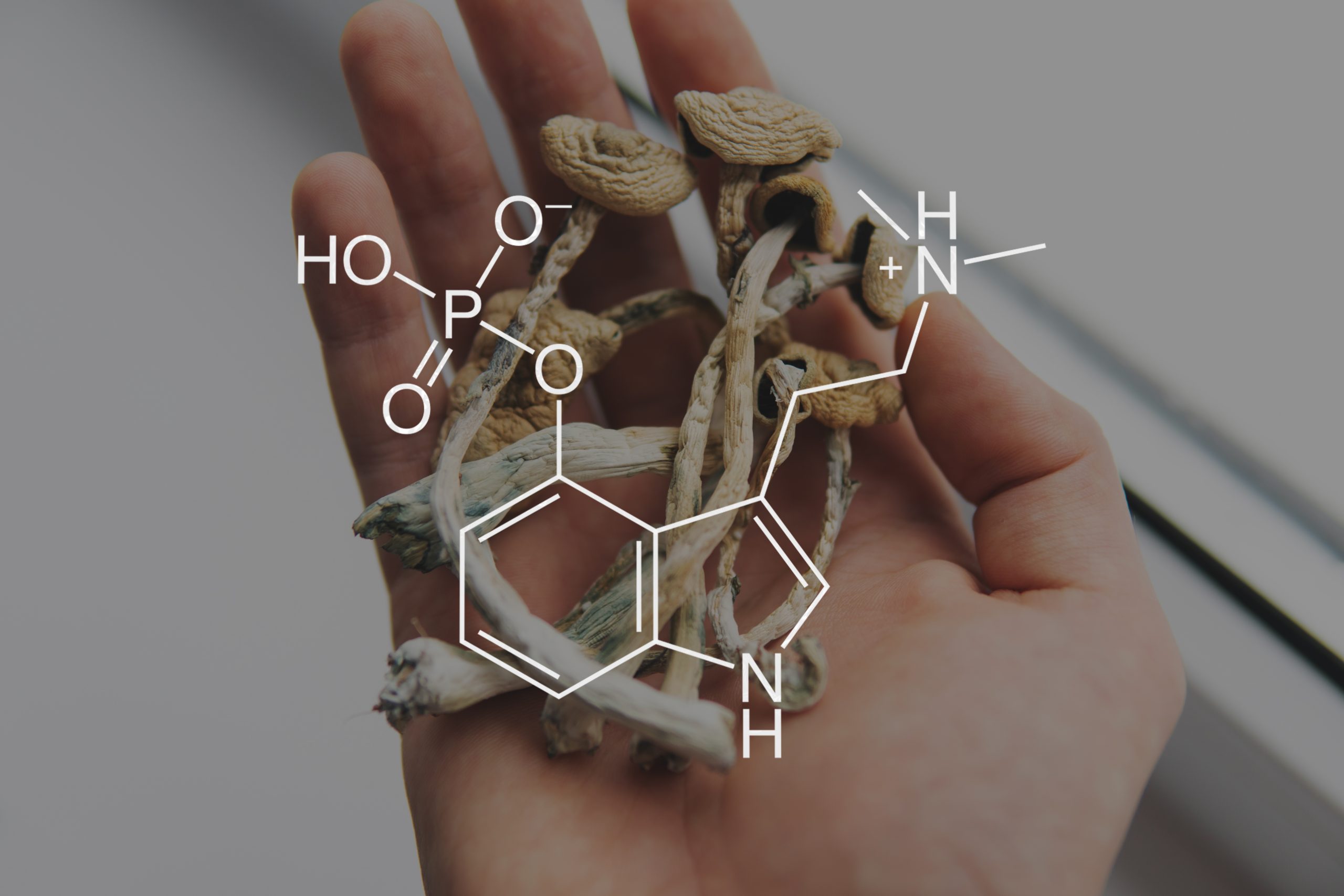
Interestingly, the authors of this 2014 paper state, “The psychedelic state is considered an exemplar of a primitive or primary state of consciousness that preceded the development of modern, adult, human, normal waking consciousness.” This very much aligns with Jung’s analysis of the trickster’s level of consciousness. The highly disordered and flexible brain activity occasioned by psychedelics has also been tied to child-like wonder: a state of curiosity, present-minded joy, and giddiness when confronting a world that appears novel and unusual. Psychedelics also act like trickster chemicals, then, because they put us in a more child-like, silly, and playful state of mind, which trickster figures often exemplify.
However, psychedelic disruption in the brain does not end there: these compounds are also associated with disruptions to many aspects of life: personality, attitudes, beliefs, worldviews, values, lifestyles, norms, and culture. The close link between psychedelics and counter-culture shows how disruptive and subversive these compounds can be. Tricksters defy authority and the status quo – similarly, the use of psychedelics leads to increases in the personality trait openness, an aspect of which includes a tendency to challenge authority. The psychedelic guru Timothy Leary – often described as a trickster due to his rascality and provocative style – promoted the following mantra: “Think for yourself and question authority.”
Much like trickster figures, psychedelics can take us out of the comfort of normality, offering experiences that challenge what we believe about ourselves and the society we live in. Just like irreverent tricksters, psychedelics can make our beliefs, roles, identities, and customs appear silly and arbitrary. We may come to see the importance of being relaxed and flexible instead of serious and rigid.
Next, we find that psychedelics elicit our cheeky and humorous side. Quite reliably, psychedelics enhance humour: the things that we are experiencing or thinking about in an altered state become so hilarious, ridiculous, and absurd that they lead to uncontrollable laughing fits. Like the ritual clowns of certain Native American tribes, psychedelics heal us through humour and laughter. Moreover, through integration and increases in creativity and openness following psychedelic use, this comedic mode of being can outlast the psychedelic experience. This kind of experience can alter our personalities and outlooks in such a way that all aspects of reality – from the self to the universe as a whole – can be viewed through the lens of the trickster archetype. In other words, everything becomes fit for comedy.
Finally, trickster entities may appear in the psychedelic experience, something that appears to be particularly common in the case of DMT, although spritely, mischievous, and playful entities can appear in realms associated with other compounds. The propensity of psychedelics to engender visions of elves, gnomes, little people, clowns, jesters, and other entities with trickster-like traits could be viewed as further evidence that these traits are deep in the human psyche, asking to be expressed after being suppressed by civilising forces. The trickster archetype may subsequently manifest in dreams and creative works, but the powerful mind-manifesting effect of psychedelics means that it can come bursting forth into our awareness with great rapidity and intensity.
The more malicious, teasing, and mocking entities encountered in psychedelic realms could be seen as clear representations of the shadow. Their appearance could be a sign that we are hiding from something about ourselves we perceive as inferior, evil, or unacceptable. By failing to address this, we won’t be able to achieve individuation (the integration of our different parts). Thus, aspects of the shadow will appear as autonomous personalities or beings (malicious tricksters) that appear to exist separately from us. Under a Jungian worldview, however, these seemingly autonomous beings are, in fact, parts of our psyche we need to integrate.
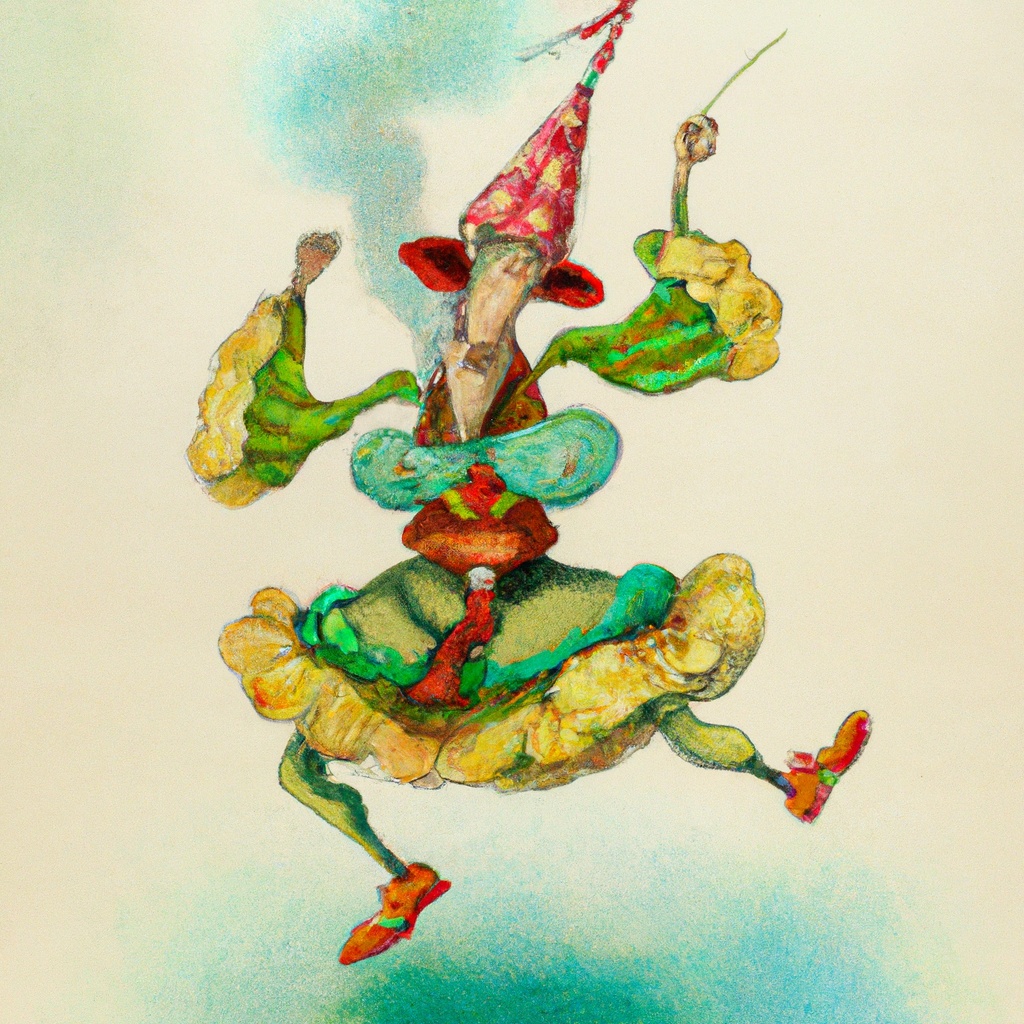
The idea of psychedelics as trickster chemicals is not meant to replace other terms, such as medicine or entheogen; it is intended to supplement them as well as introduce a new framework for thinking about psychedelic effects. Of course, the term psychedelic itself is broad and all-encompassing enough to cover the myriad subjective effects that a psychedelic compound can elicit. But by using a more specific notion like trickster chemical, I think we can start to interpret aspects of the experience – those that I have described – in a way that fosters personal growth and healing. Just as the terms medicine and entheogen may encourage a more therapeutic and spiritual relationship to psychedelics, respectively, the term trickster chemical may also help individuals unearth richer levels of meaning and wisdom.
Sam Woolfe | Community Blogger at Chemical Collective | www.samwoolfe.com
Sam is one of our community bloggers here at Chemical Collective. If you’re interested in joining our blogging team and getting paid to write about subjects you’re passionate about, please reach out to David via email at blog@chemical-collective.com

Welcome to Chemical Collective.
Create an account to earn 200 welcome points.
Already have an account? Sign in


Check out our Community Blog and get involved with the conversation. You will be awarded 50 x ChemCoins for each comment up to a limit of 250 total ChemCoins.


Have you purchased any of our products? Reviews and reports are so important to the community. Share your honest opinion, and we’ll reward you with 50 ChemCoins for each review!


Every time you complete an order with us, you’ll be awarded ChemCoins for each Euro spent.
Welcome to Chemical Collective.
Create an account to earn 200 welcome points.
Already have an account? Sign in

Earn commission every time someone makes a purchase through your link.
When you become an affiliate, you will be allocated a unique link to share with your friends, followers, subscribers, or Aunt Susan.
You can choose to payout the commission earned once per month, or save it up to receive on a rainy day! Commission earned is 5% of the total order value per referral.
Contact us to join the Chemical Collective family and become an affiliate.
share your toughts
Join the Conversation.
Very great article, thank you for this post!
Nice article and so different from more. I am curius about a same type analysis for psychedelics depending on Adler,Freud or Vilhem Raich, theories about human mind and how act consciously and unconsciously (also mental how change us).And ,Lacan of course ,i forget to add ,special for me that find,to have the more important and more “modern” for today peoples and society, theories with a lot of clever humour by playing with words and not only. Also as i can remember , never had read from him something connecting directly with any kind of drug that are for recreational use or for spiritual …
And anything ,even a”ready” part, have or know anyone ,(if it is allowed to write it,about the ”ready” i am not sure),i will read it for sure.
Only know the relation that had Freud with C,in his life or as a user and or as psychiatrist/psychotherapist,as a scientist more general ,that are written even in letters or studies , as personal experiences even in more professional style,like books,
his thoughts about the Coc….